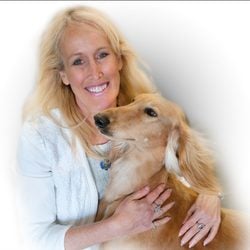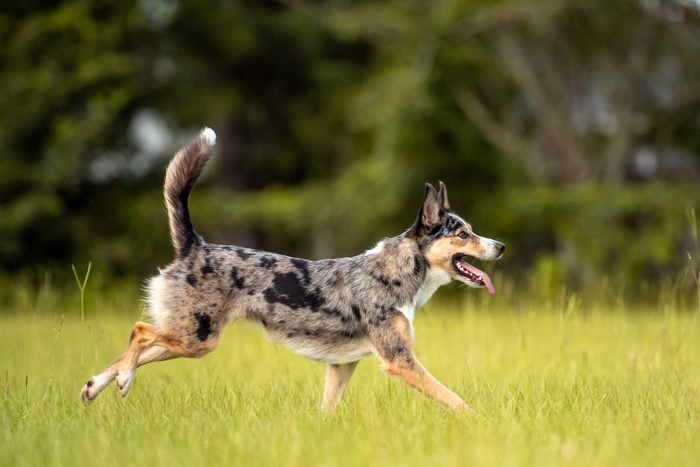
All about Aussie dogs
Australia is home to many unique native animals: koalas, kangaroos and wombats, to name a few. But in addition to these wild animal species, many domestic Australian dog breeds originated Down Under too. From the Australian cattle dog to the high-energy miniature fox terrier, these Aussie pups make great additions to the family.
But if you’re looking for a popular dog breed from Australia, there are a few things you should know. For starters, Australia is especially renowned for its herding dogs. What else would you expect from a country with so many sheep? According to Rebecca Tremble, DVM, “these highly versatile and industrious canines typically feature both strength and intelligence, including a strong aptitude for training.” That said, don’t forget the cattle dogs, terriers and companion dogs that also come from the land Down Under.
These intelligent dog breeds often come with a lot of energy, as well as some hard-headedness. “[Many] require ample space, consistent training and regular physical activity,” says Dr. Tremble. “In turn, they tend to deliver exceptional companionship and loyalty, making them great pets.”
Ahead, we’ve rounded up the Australian dogs that you can count on for liveliness and friendship, thanks to insights from Dr. Tremble and veterinarian Jennifer Bruns, DVM. Get ready to fall in love!
Get Reader’s Digest’s Read Up newsletter for more pets, cleaning, humor, travel, tech and fun facts all week long.
About the experts
|
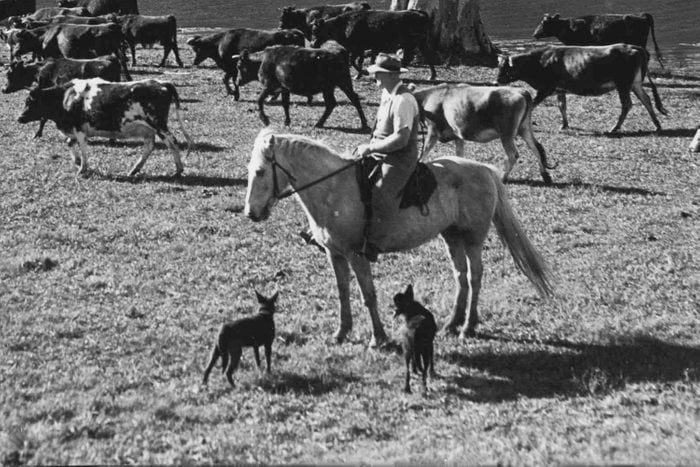
A history of Australian dog breeds
Although many of them lead lives of leisure today, the majority of Australian dog breeds were developed with careers in mind—most on this list were hardworking dogs that herded and protected livestock, assisted in hunting wild game or served as relentless ratters and mousers. When the first British penal colony was established in Australia in 1788, the settlers brought with them herds of sheep and cattle, and within a few decades, livestock numbered in the millions. And thus, the first domestic dogs in Australia were various herding breeds brought by British settlers.
Over time, cattle and sheep herders bred dogs selectively to develop the best herding and droving traits—in some cases, breeding them with wild dingoes, Australia’s only indigenous canine. Smaller terrier breeds were also used as workers, as they’d protect their homes from rodents and the many poisonous snakes native to Australia. Most Australian dog breeds still harbor their good work ethic and are happiest when they have a job to do, so get ready to provide some physical and mental stimulation.
And don’t be surprised when you don’t see the Australian shepherd on this list. That Aussie dog was actually developed in the United States! It was called the Australian shepherd because the Basque shepherds who brought its foundation stock came by way of Australia.
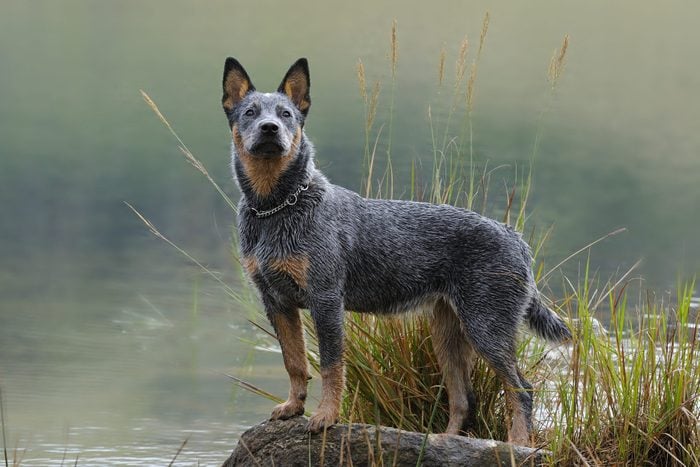
1. Australian cattle dog
As their name suggests, these muscular pups are expert herders. A relative of Australia’s wild dingoes and the Dalmatian, the Australian cattle dog is faithful, protective and intelligent. This Australian dog breed comes in a variety of colors and markings, from red and red speckled to blue and blue speckled. Expect yours to need a lot of physical exercise and mental stimulation, including obedience or agility training. Even when these pups don’t have a farm to manage, they still need a job to do. “Some even say that they will herd their human family members,” says Dr. Bruns. “These breeds are usually extremely smart and enjoy things like agility training or advanced skills training that is mentally engaging.”
The Australian Cattle Dog Rescue Association, which helps rescue ACDs from shelters where they are facing euthanasia, cautions that because of their protective nature, proper socialization is vitally important for this breed. They’re also likely to choose a family member to bond with, which is why they’re sometimes referred to as Velcro dogs.
| Breed overview | |
| Height: | 17 to 20 inches |
| Weight: | 31 to 35 pounds |
| Life expectancy: | 12 to 15 years |
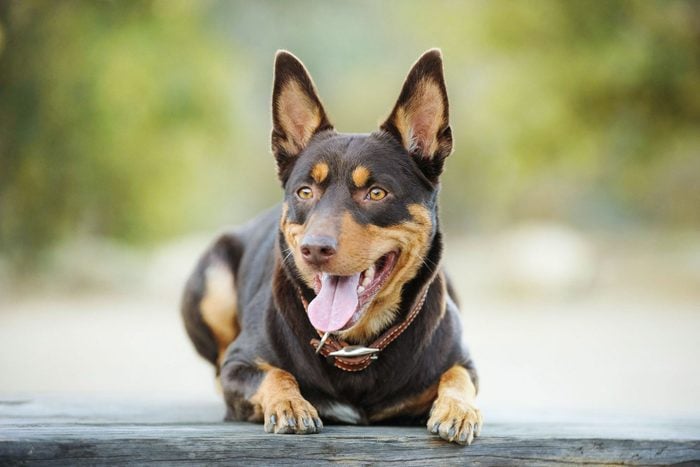
2. Australian kelpie
The Australian kelpie is another hardworking herder. Instead of focusing on cattle, these guys specialize in sheep. Now considered a rare dog breed, the kelpie derived from collie-type dogs from Scotland and was developed to tolerate the Outback’s harsh heat. Because of their herding history, kelpies have boundless energy and require intense daily exercise.
The U.S.-based Australian Kelpie Rescue Organization says that due to their energy levels, kelpies are not suited for apartment life—they need room to roam and a job to do. However, the American Kennel Club (AKC) notes that these pups do have an off switch and will be happy to curl up on the couch immediately after a rigorous run. Their short coats range from black and blue to chocolate and fawn.
| Breed overview | |
| Height: | 17 to 20 inches |
| Weight: | 31 to 46 pounds |
| Life expectancy: | 10 to 13 years |
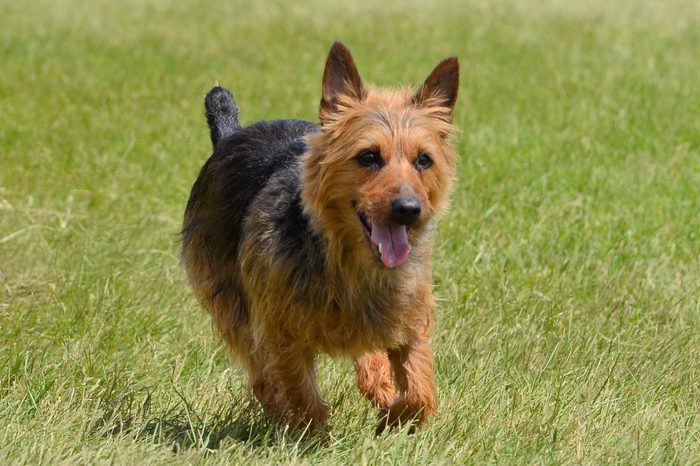
3. Australian terrier
These smaller terriers were bred to be all-purpose exterminators, eliminating small mammals and snakes from the rugged land on which they worked. Because they frequently lived in remote regions of Australia, these pups learned to create tight bonds with their owners. Today, they’re known for being cuddly, friendly and affectionate dogs that often take a strong liking to small children and the elderly.
The AKC notes that the Aussie terrier isn’t always a good fit for multi-dog homes. But that’s not due to aggression; it’s because these loving pups want you all to themselves. They can also be quite barky, so they might not do well in an apartment, especially when left alone all day. When it comes to their grooming needs, the Australian Terrier Club of America says that a weekly brushing should suffice and advises owners to keep their dogs’ longish hair trimmed in areas that are prone to getting dirty—namely around the eyes, ears, paws and tail.
| Breed overview | |
| Height: | 10 to 11 inches |
| Weight: | 15 to 20 pounds |
| Life expectancy: | 11 to 15 years |
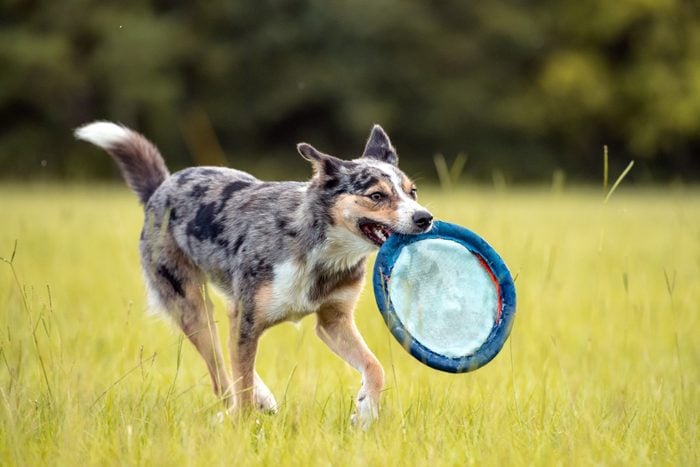
4. Koolie
These medium dog breeds are hardworking jacks of all trades and can herd anything from sheep and cattle to goats, horses and buffalo. They’re fearless herders that will actually walk on the backs of livestock if necessary. They’re also particularly well suited for agility, endurance and tracking work.
Koolies require lots of exercise and fare best when they have a job to do. They come in a range of colors, including merle, and can have a smooth, short, short-rough, medium, and double or single coat. (The Koolie Club of Australia does caution that due to the increased risk of blindness or deafness with the double-merle gene, two merle dogs should never be bred.) While not recognized by the AKC, koolies are recognized by the Australian National Kennel Council and the American Herding Breed Association.
| Breed overview | |
| Height: | 13 to 23 inches |
| Weight: | 33 to 53 pounds |
| Life expectancy: | 18 years |
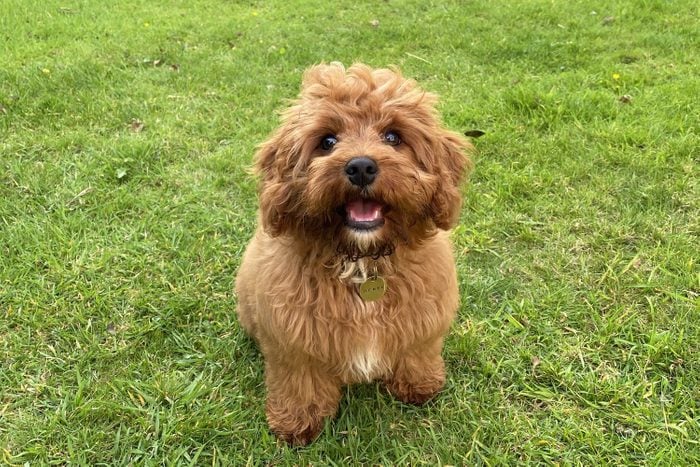
5. Cavoodle
While technically a mixed breed, the Cavoodle (you know it as a Cavapoo in the United States) was first bred in Australia and is one of the few dogs on our list that was not developed as a working dog—these pups prefer the life of leisure!
A cross between a Cavalier King Charles spaniel and a poodle, these cuties have become increasingly popular over the last decade. They’re small dogs that look like teddy bears and come in gold, cream, black and brown. They’re affectionate and gentle, and they make great family pets. And because of their toy size, the Cavoodle is well suited to city life and is the perfect pup for a novice owner. They also have hypoallergenic coats with minimal shedding. There’s no breed standard for these mixed-breed dogs, but if you decide to welcome one into your home, be sure to work with a reputable breeder.
| Breed overview | |
| Height: | 10 to 15 inches |
| Weight: | 11 to 26 pounds |
| Life expectancy: | 10 to 15 years |
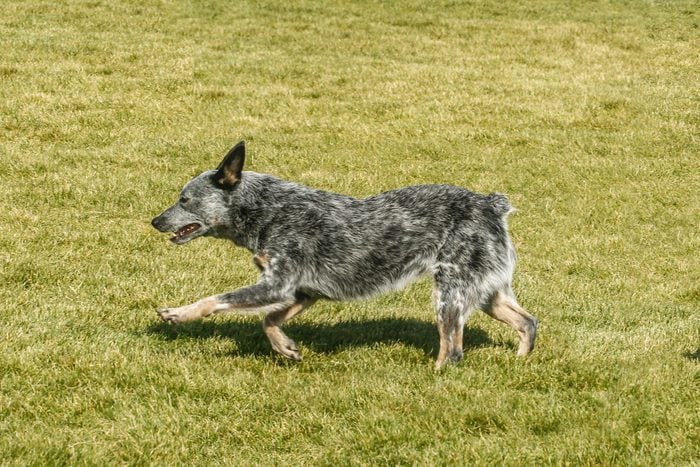
6. Australian stumpy tail cattle dog
This breed might sound like a shorter-tailed version of the Australian cattle dog, but the two Australian dog breeds are very different. While they stand at about the same height, the Stumpy has longer legs, and about two-thirds of them are born with a naturally bobbed tail. These working pups are high energy, take well to training and love activities such as hiking, backpacking and obedience work to keep their minds and bodies sharp. The AKC does say to proceed with caution when introducing a Stumpy to other pets, though.
Today, Stumpies are relatively rare, but interest in the breed is growing due to its loyalty, intelligence and unique look. In addition to their bobbed tails, Stumpies have blueish or light red roan coats.
| Breed overview | |
| Height: | 17 to 20 inches |
| Weight: | 32 to 45 pounds |
| Life expectancy: | 12 to 16 years |
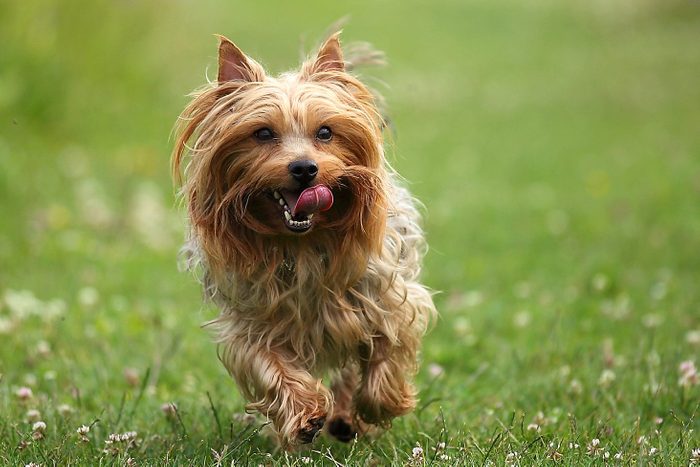
7. Silky terrier
These toy terriers make wonderful companions. They’re smart, friendly and affectionate, and thanks to their small stature, they fair well in urban environments. Native to Sydney, these pups are the result of the crossbreeding Yorkshire terriers and Australian terriers. However, they’re larger than Yorkies and smaller than Aussies. Aside from their size, their most notable trait is their long, silky coat. The Silky Terrier Club of America recommends daily brushing and weekly baths.
Silky terriers can be reserved with strangers and can get a little barky, which means you’ll want to socialize them early to ensure they get along with other people and dogs. And here’s something that might surprise you: Despite their small size and lapdog qualities, this Australian dog breed excels at agility trials.
| Breed overview | |
| Height: | 9 to 10 inches |
| Weight: | 10 pounds |
| Life expectancy: | 13 to 15 years |
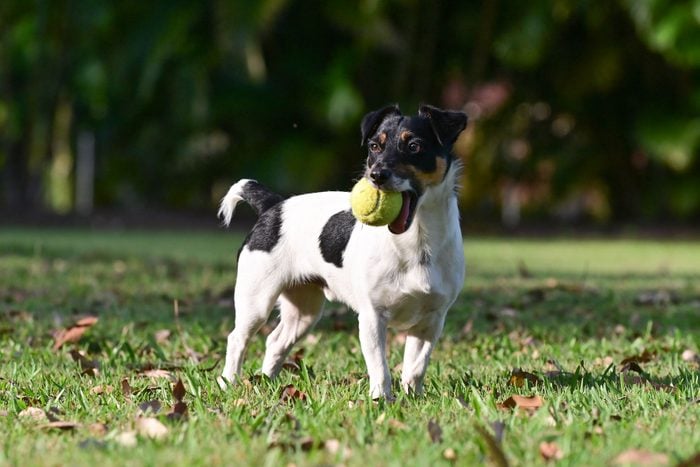
8. Miniature fox terrier
These cute pups are known in their native Australia as mini foxies, and while they are not recognized by the AKC or any other mainstream registry, they are recognized by the Mini Foxie Club of Australia! While rare outside of Australia and New Zealand, mini foxies are highly popular in those countries and beloved for their agility, energy and big-dog personality, despite their compact size.
The breed was originally used to hunt small pests, such as rabbits and rodents, and today, its working spirit remains. Yet, according to the Mini Foxie Club of Australia, foxies are versatile house dogs that will adapt to their human’s pace: If you want to run with them, they’ll run; if you want to curl up on the couch and watch TV, they’re here for it. Mini foxies come in black, white, tan and tricolor coats, and their short coats make them easy to care for.
| Breed overview | |
| Height: | 9 to 12 inches |
| Weight: | Proportionate to height |
| Life expectancy: | 10 to 14 years |
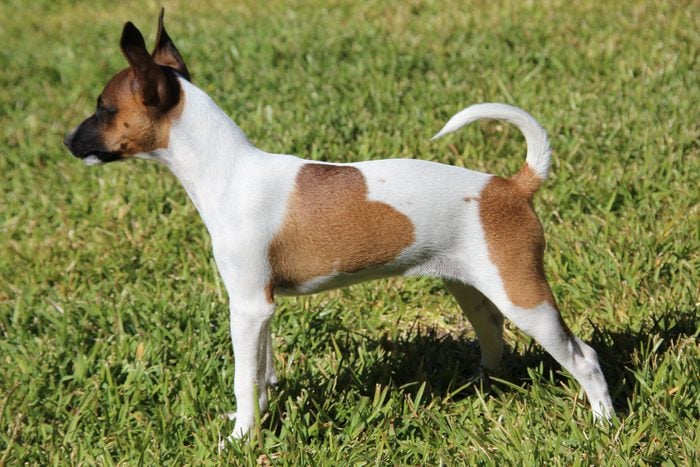
9. Tenterfield terrier
These compact terriers are not-so-distant relatives of the previously mentioned mini foxies. While they’re both small dog breeds, similar in size and weight, their coats differ—a Tenterfield terrier’s coat is smoother than a mini foxie’s. Both dogs are great at watching the house and will likely bark when there’s company. Because the Tenterfield is a former working pest-control dog, you’ll want to make sure yours is entertained.
Australia’s National Tenterfield Terrier Council says that this high-energy breed likes to dig—and as any trainer will tell you, a bored dog is more likely to get into trouble. Take your pup on a few 30-minute walks a day, and make sure to engage it in a game of fetch, agility training or obedience training regularly. The council also says that a Tenterfield isn’t suitable for a household with small pets, such as hamsters or gerbils, as its prey drive is just too strong. However, it will do OK with cats, provided it’s introduced while still a puppy.
| Breed overview | |
| Height: | 10 to 12 inches |
| Weight: | Proportionate to height |
| Life expectancy: | 12 to 16 years |
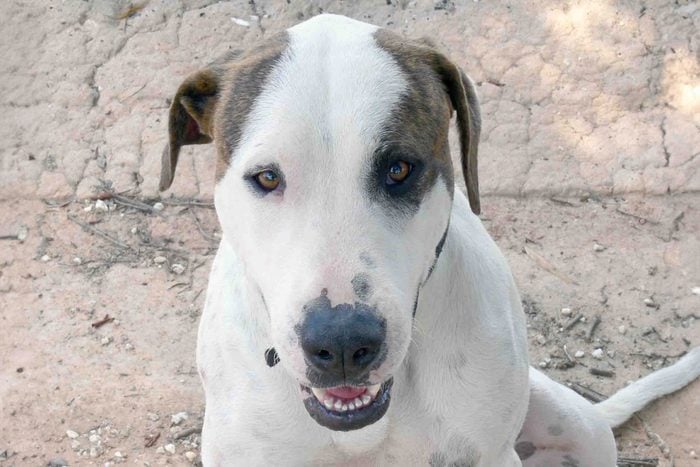
10. Bull Arab
This hybrid Australian dog breed was developed in the 1970s and is a mix of mostly English bull terrier and greyhound—one of which is favored for its strength and the other for its speed and sighthound abilities—as well as German short-haired pointer. Although it’s not an AKC-recognized breed, the Bull Arab—also called the Australian pig dog or Aussie pig, is the most popular pig-hunting dog in the country, and thanks to its tenacious personality, it is also used in police work and search and rescue.
These strong, stocky pups have a short, smooth coat and may have light-colored eyes. Physically, they’re easy to care for, but because of their very strong prey drive, they need to be habituated early on, especially in houses with children and other pets.
| Breed overview | |
| Height: | 23 to 28 inches |
| Weight: | 65 to 85 pounds |
| Life expectancy: | 12 to 15 years |
Why trust us
At Reader’s Digest, we’re committed to producing high-quality content by writers with expertise and experience in their field in consultation with relevant, qualified experts. For this piece on Australian dog breeds, Elizabeth Heath tapped her experience as a lifestyle journalist and dog writer, and then Caroline Coile, PhD, an award-winning journalist specializing in canine breeds, health and science, gave it a rigorous review to ensure that all information is accurate and offers the best possible advice to readers. We verify all facts and data, back them with credible sourcing and revisit them over time to ensure they remain accurate and up to date. Read more about our team, our contributors and our editorial policies.
Sources:
- Jennifer Bruns, DVM, MPVM, veterinarian and vice president of business development at PetSmart Veterinary Services; interview, Jan. 2024
- Rebecca Tremble, DVM, veterinarian and U.S. Director of Professional Partnerships and Strategy at Hill’s Pet Nutrition; interview, Jan. 2024
- American Kennel Club: “Dog breeds”
- Aussie Rescue SoCal: “Origin and history”
- Australian Cattle Dog Rescue Association: “Living with an ACD”
- Australian Kelpie Rescue Association: “Home”
- Australian Shepherd Club of America: “Finding an Aussie”
- Australian Stumpy Tail Cattle Dog: “Society of the U.S.”
- Australian Terrier Club of America: “Grooming”
- Koolie Club of Australia: “Koolie Fundamentals”
- Mini Foxie Club of Australia: “Welcome to the Mini Foxie Club”
- Silky Terrier Club of America: “Silky Terrier Breed How-To Guide”
